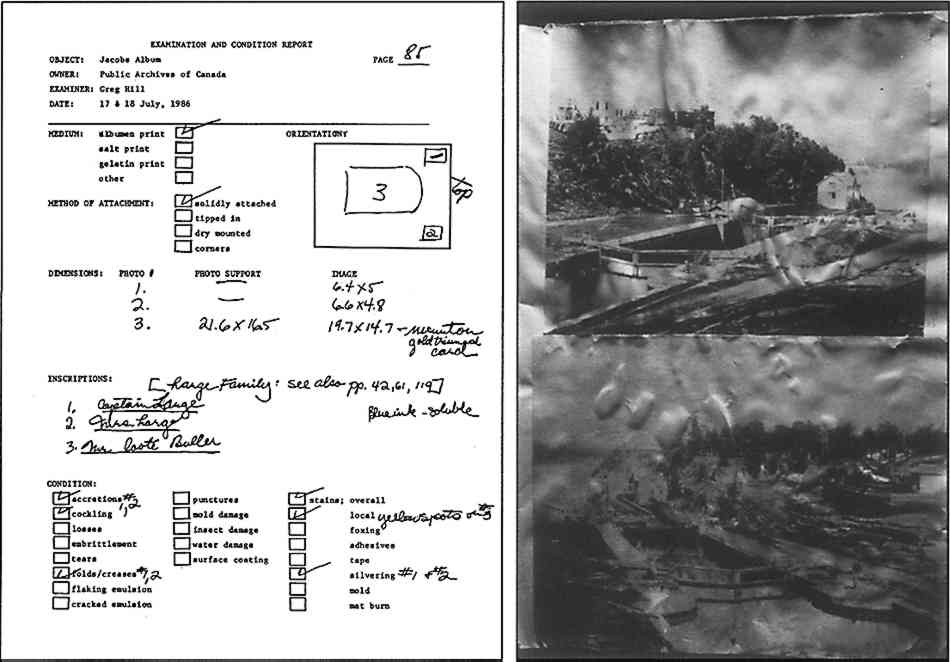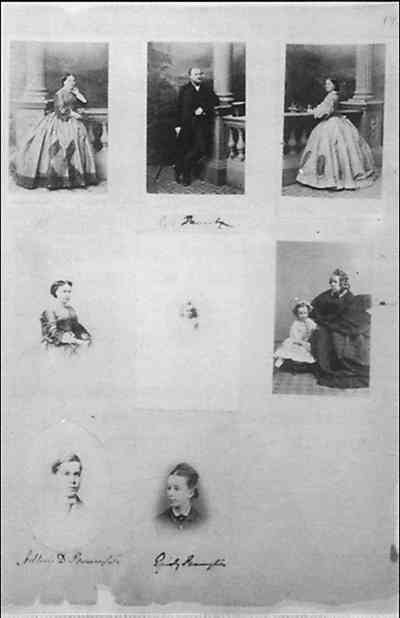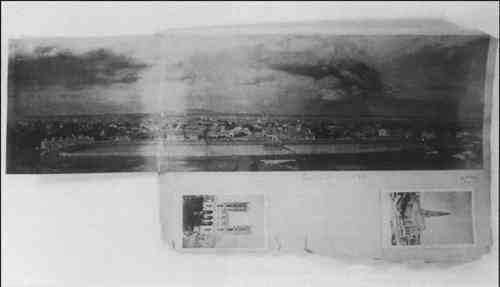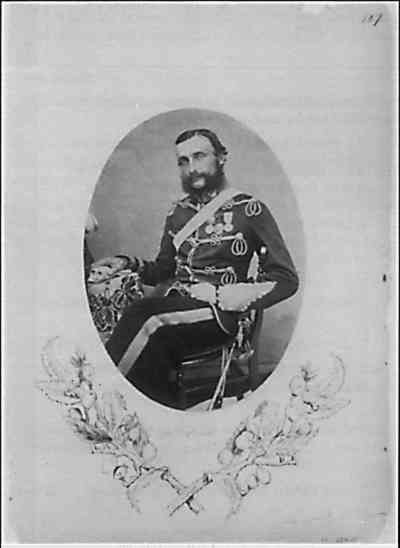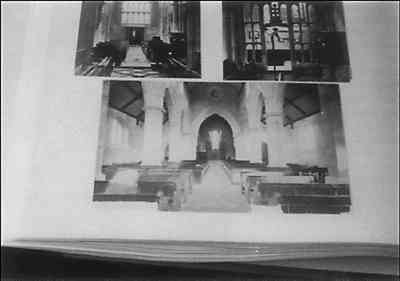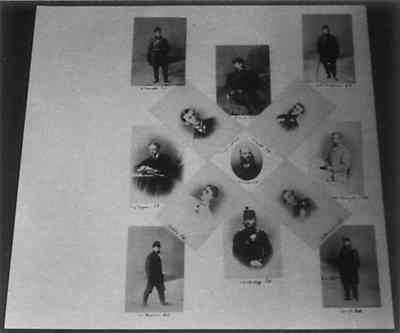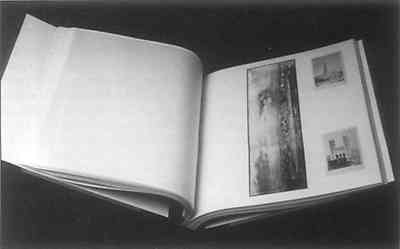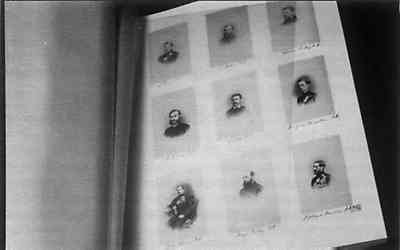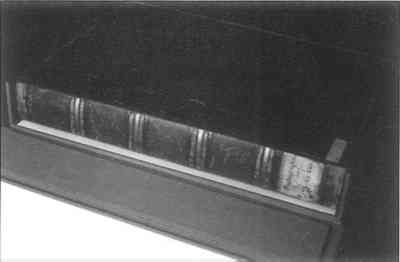THE CONSERVATION OF A PHOTOGRAPH ALBUM AT THE NATIONAL ARCHIVES OF CANADAGREGORY HILL
ABSTRACT—The full conservation treatment performed on a large 19th-century Canadian photograph album at the National Archives of Canada is outlined in detail. The Jacobs Album, considered to be one of the most valuable in the collection, was completely taken apart. All 913 photographs were lined and remounted onto new pages, and new bindings were constructed. The original pages and binding jackets were treated and stored separately. Also outlined are the treatment options presented prior to treatment and the decision-making process that resulted in this treatment. 1 INTRODUCTIONALBUMS AND books containing photographs may be slotted into several different classifications that are by no means mutually exclusive. These include the limited edition fine art portfolio, notebooks, scrapbooks, and albums constructed specifically to house photographs. The conservation of these objects can present a variety of overwhelming problems for the institution charged with the responsibility of preserving them. Given that an album is physically in need of conservation, justification for conserving it is influenced not only by the nature of the collection but also by the relative significance of the object to that collection and the availability of resources, such as expertise and funding, needed to conserve it. The extent of the actual conservation treatment performed on an album, portfolio, or scrapbook will depend on the nature and condition of the original materials, the intended use of the object, and whether the original format is to be maintained. In contrast to the treatment of archival artifacts, the composite nature of albums, scrapbooks, and fine art portfolios often makes it impossible to devise standardized treatments. As with any fine art object, each album must be considered a unique composite object and treatments determined on an individual basis. Devising a sensitive, acceptable album treatment requires the contribution of curators, photograph conservators, and book conservators. The conservation of the Jacobs Album at the National Archives of Canada is an example of the successful collaboration of these three areas of expertise. 2 THE JACOBS ALBUMTHE JACOBS ALBUM, named for the individual who sold it to the Public Archives of Canada in 1938, was assembled by Col. Alexander George Russell, son of the duke of Bedford, during his sojourn in North America as head of the First Battalion of the Prince Consort's Own Rifle Brigade. All of the photographs in the album date from 1860–69, the years Russell was in Canada. Subjects include his family, members of English nobility, the military establishment, and the various camps and cities where he was stationed. The 3 EXAMINATION/CONDITION REPORTA CONTRACT was awarded to the author to conduct an examination of the album. The resulting report contained a complete examination/condition report and several treatment options with cost estimates, indicating the preferred treatment option. To prepare the report, the author developed an examination form that was completed for each page of the album, noting page number; the number, orientation, and dimensions of photographs on the page; inscriptions; methods of attachment; and general condition (fig. 1). This form proved to be an efficient means of assembling the required information for the report and was extremely helpful in maintaining order during actual treatment of the album.
The Jacobs Album consisted of three volumes, which appear to be account books dating from the mid to late 19th century. The acidic groundwood paper was of poor quality and generally incompatible with the photographs mounted on it (figs. 2a–b). Several years prior to treatment, the pages were cut from their original bindings, placed in cellulose triacetate sleeves, and housed in Solander boxes. Two of the three album jackets survived and were stored separately. The album was received in this state for examination.
In brief, the following observations were made:
4 TREATMENT OPTIONSA LITERATURE search was conducted at the beginning of the project to aid in the formulation of comprehensive, sound treatment options. The results revealed little, but included three papers presented at the 1985 winter meeting of the Photographic Materials Specialty Group of the American Institute for Conservation. Two papers presented case studies (Albright 1985; Porter 1985) and the other presented the results of a survey conducted to elicit curatorial concerns on the treatment of photograph albums (Fiske 1985). Based on the results of this survey, and after consultation with other conservators and with the National Archives of Canada staff, the following treatment options were devised:
Binding options included post-binding or account-style binding. Post-binding allows individual pages to be removed from the album for research or display and it does not require that the text block be pressed during the binding operation. Due to the large number of photographs in the album that are mounted on heavy card, pressing could cause severe damage to unmounted photographs. Account-style binding, although in keeping with the original, requires pressing of the text block and prohibits the subsequent removal of individual pages for research or display. Treatment option 3, with post-binding of the pages, was the author's preferred treatment plan and, with a few minor changes, was accepted by the curatorial staff. 5 TREATMENTThe author carried out the work in the Picture Conservation Division of the National Archives of Canada. Binders in the Records Conservation Division were responsible for the binding of the album after treatment. The following is a step-by-step outline of the treatment procedure and the various problems encountered. The treatment was documented in a written report with photographs. 5.1 PHOTOGRAPHIC DOCUMENTATIONEach album page containing photographs was documented with 4 � 5 in Kodak Ektachrome 64 Daylight Type 6117 and 4 � 5 in Kodak Technical Pan Film Type 2415. The transparencies were exceedingly valuable records for keeping the 913 unmounted photographs in order. 5.2 DRY CLEANINGFollowing photodocumentation, all pages, excluding photographic emulsions, were dry cleaned with Scum-X eraser powder and vinyl erasers. Due to the sulphur content of most eraser materials, the pages were then thoroughly brushed to remove the residue 5.3 SEARCH FOR REPLACEMENT PAPERFinding an identical replacement for the original album pages was not considered because of their light weight and poor quality. The criteria for selection of a new paper included a number of factors. The paper must be a pure-fiber, nonbuffered, and lignin-and sulphur-free wove sheet. The surface must be smooth, and the sheet must be of a suitable weight to support the photographs and tolerate wet mounting without serious deformation. The color should be sympathetic to the color of albumen prints. After a lengthy search and continued consultation with the curatorial staff and the binders, a paper manufactured by Barcham Green was selected. Penshurst is 100% rag, handmade, 110 lb weight, cream colored, and hot pressed for a smooth finish. As the paper had to be ordered from England, a paper similar in weight and composition was used for testing mounting methods. Although results using aqueous mounting methods were not entirely satisfactory, the order to England was placed, anticipating a two-month delivery time. In fact, the paper took four months to arrive. 5.4 REMOVAL OF THE PHOTOGRAPHS FROM THE PAGESBefore any photographs were removed from a page, a template recording the position of each photograph on a given page was made on a piece of Mylar, using a grease pencil to outline the photographs and page edges. This preliminary step, recommended by Gary Albright, photograph conservator at the Northeast Document Conservation Center in Andover, Massachusetts, greatly facilitated the repositioning of the photographs onto the new pages. Because of the soluble nature of many of the inscriptions, the primary dismounting procedure consisted of applying a methyl cellulose poultice to the verso of the page in the area of the mounted photograph. Where soluble inks were not a problem, the poultice was applied over the entire verso. After 20–30 minutes, the poultice was removed, and, with the photograph lying face down, the page was gently peeled away. In almost half the cases, an excess of hide glue had been used to mount the photograph. The glue layer softened readily on contact with moisture from the poultice, and the photographs were removed almost effortlessly. Residual adhesive was gently removed with a lightly dampened sponge from both page and photograph, and the pages and photographs were left to dry between blotters under a light weight. The primary advantage of this method of removal was that the albumen prints, which are very sensitive to moisture, were not in direct contact with moisture and consequently remained flat. Where the composition of the adhesives was different, the method of removal of the photographs was changed accordingly. Starch pastes and mixtures of starch and hide glues were more tenacious. A microspatula was used to help pry the photographs from pages where these adhesives were used. Some purified gelatin adhesives and some starch pastes proved to be entirely resistant to the poultice method. If soluble elements were not present, these pages were immersed in a warm water bath (50�C), and the photographs floated off. The same removal method was employed for pages with photographs adhered to both recto and verso, if safe to do so. Approximately 10% of the pages were treated in this manner. A third removal technique was developed for cases in which photographs were adhered to both recto and verso of pages containing soluble inscriptions. A mixture of up to 50% ethanol in water was applied to the face of the photograph with a soft brush. Because of The latter two processes were used infrequently due to the greater tendency of albumen prints to curl following immersion in water. In addition, research has indicated that the characteristic cracks in albumen emulsions tend to open up slightly following aqueous immersion (Swan 1981). After each photograph was removed, its page and position were recorded on the verso with graphite. In spite of the care taken when removing the photographs from the pages, approximately 30% of the pages sustained damage due to their poor physical condition. This damage was deemed acceptable after consultation with curatorial staff, as long as inscriptions remained intact. The removal of 913 photographs took 2 � months. 5.5 UNFORESEEN COMPLICATIONSAs the removal of the photographs progressed, unforeseen problems emerged. Inscriptions were discovered on the verso of approximately one-fourth of the images. These inscriptions were primarily studio stamps, photographers' names, or handwritten notations identifying the sitter. At the request of curatorial staff, all verso inscriptions, with a record of their location, were photographed with 35mm film, both color and black and white. Watermarks were discovered on five albumen prints. Of these, four were identified as BFK Rives and the fifth was illegible. The watermarks were thoroughly photodocumented by transmitted and reflected light before the photographs were mounted onto the new album pages. The most disturbing finding was that many photographs had been badly damaged prior to being mounted in the album. Many were skinned, and on several only the delicate emulsion layer survived. Others had sustained losses in image areas and many appear to have been badly degraded by highly acidic mounts. In two instances, photographs were discovered beneath other mounted works. In one, the uncovered image was identical to the one mounted over it but had been badly damaged in a previous removal attempt. The second photograph uncovered was a duplicate of an image found elsewhere in the album. The uncovered photographs were photodocumented and mounted separately. 5.6 REPAIRSPhotographs that had sustained physical damage, either prior to mounting or as a result of rough handling of the album pages, were repaired using dilute wheat starch paste and strips of thin Japanese tissue. Where little remained of the photographic paper or the support was in several pieces, the photograph was fully lined with Japanese tissue and wheat starch paste. After consultation with curatorial staff, the decision was made not to infill losses, and not to paint losses of image (fig. 5). These procedures were deemed unnecessary, as the documentary value of the object took precedence over aesthetic considerations.
5.7 MOUNTING SYSTEMSSThe curators agreed that the photographs should be solidly mounted onto the new album pages. A solid mounting system would provide greater security and less bulk for the photographs than hinging or photo corners, since the album format was being maintained. A variety of aqueous mounting techniques were tested, including drum mounting (pasting down only the perimeter of the print to the new page), dacron lining, and the use of the paper suction table. Although the dacron lining method provided the best results, it was not used because it required pasting out the verso of each album page. The resulting excess of adhesive would be unacceptable, as the face of each photograph would be in contact with the adhesive layer on the verso of the page preceding it. All aqueous methods caused a slight deformation of the album page that cannot be tolerated by the binding operation. A number of nonaqueous adhesives, namely acrylics and poly(vinyl acetates), were selected for testing based on their chemical stability and long-term flexibility. Solvent activation was preferred to heat as the method of adhesion, as many albumen prints are heat sensitive (Reilly et al. 1982). Rhoplex AC-234, an acrylic emulsion, was selected because of its working properties, and a short term photographic stability test was conducted (ANSI 1984). Albumen print step scales (steps of gradually increasing photographic image density from black to white) of gold-toned and untoned, mounted and unmounted samples were prepared and subjected to a temperature of 60�C with an RH of 80% for a seven-day period. Mounted and unmounted samples were separated in different desiccators to avoid potential contamination. The mounted scales consisted of a mounting paper of the same composition as the new album page, solidly adhered to the albumen step scale with Rhoplex AC-234. According to tricolor densities taken on a Macbeth TR924 densitometer before and after incubation, the mounted and unmounted gold-toned step scales remained unchanged while the mounted and unmounted untoned samples faded and stained equally. Mounting tests were then conducted following the procedure outlined below. The Rhoplex was diluted to approximately 60% with deionized water to minimize the amount of adhesive on the Japanese tissue, thereby limiting the amount of adhesive in contact with the photographs and rendering the procedure more easily reversible. The adhesive was brushed onto both sides of thin Japanese tissue and allowed to air dry. The tissue was solvent activated and adhered to the photograph, trimmed, and activated a second time on the verso and placed on the album page. Despite the overwhelmingly favorable results of this procedure, an interlayer was proposed to isolate the photograph from the Rhoplex tissue. Although the interlayer would add slight bulk to the new album pages, the curatorial staff and the binders approved of the proposal. Consequently, all the photographs were initially lined with a thin Japanese tissue and wheat starch paste. To facilitate this procedure, large sheets of Japanese tissue were dampened and then stretched and taped onto mounting boards and allowed to dry. The lining was pasted out with a dry wheat starch paste, and up to 75 humidified photographs were applied to the tissue at a time. Following tests of various solvents for activating the Rhoplex, acetone was selected because the pages remained flat regardless of the number of mounted prints. Although ethanol also worked well and was preferred for its lower toxicity and slower drying time, its increased hygroscopicity resulted in slight cockling of the album pages. By the time the album paper arrived from England, the mounting technique had been perfected, the Rhoplex tissue prepared, and all the photographs had been lined with the The first step in the mounting of the 913 photographs was to adhere the Rhoplex tissue to the verso of the photographs. A piece of the tissue, large enough to accommodate all the prints from one page, was brushed with acetone. The lined prints were positioned, covered with silicone release paper, and rolled out to ensure adhesion. Excess tissue was trimmed from the edges of each print. Next, the Mylar templates were positioned on the new pages, and a pin tool was used to mark the exact location of each print on the page. The verso of each print was lightly brushed with acetone. The photographs were then positioned on the page, covered with silicone release paper, and again gently rolled to ensure adhesion. After all photographs were adhered to a new album page, the page was placed between clean blotters and very gently pressed until the solvent had completely evaporated. Where photographs had been originally mounted on both sides of the page, they were remounted on separate pages for the new album. The procedure was expedited by the fact that following lining and adhesion of the Rhoplex tissue, the photographs were quite flat. As a result of the lengthy delay of the paper shipment, only three weeks were left for the completion of the project. The mounting task was completed in less than two weeks, allowing ample time for the incorporation of the inscriptions (fig. 6).
5.8 INCORPORATION OF INSCRIPTIONSThe inscriptions, hand written either by Lord Russell or a close associate at the time the album was assembled, in most cases provide the only means of identifying the photographs. Several suggestions for incorporating the inscriptions into the new album were considered:
Procedure 3 was preferred by the curatorial staff as it would allow for the original album pages with inscriptions to be preserved intact while marginally maintaining the “look” of the original album. A paper suitable for photocopying and matching the color of the new album pages was found. Domtar Krypton is 100% cotton, light weight, and smooth enough to produce a clean, sharp photocopy. An electrostatic, dry (carbon) pigment process (two component magnetic brush development) was used, and, for the most part, the results were acceptable. In a few cases the discolored original paper reproduced with a gray tone. The curators did not find these instances objectionable, and the copies of the inscriptions were trimmed and mounted on the new album pages with the Rhoplex tissue system (fig. 6). 5.9 HANDPAINTED DECORATIVE MOTIFSThe original treatment plan for album pages that had been embellished with hand-painted decorative borders consisted of removing the photographs, washing and repairing the original page (where possible and necessary), and finally mounting the original page to the new album page and remounting the photographs. After reconsideration, the curators decided that all of the original pages should be stored together. Reproducing the decorative elements in the same manner as the inscriptions, by photocopying, was deemed unacceptable, as the monochromatic and inferior quality of the copy was a far departure from the original. The new album therefore contains no artwork, and the original embellished pages have been thoroughly documented and preserved. 5.10 TREATMENT OF THE PANORAMASIncluded in the album were two panoramic views of Montreal. One is made up of three prints mounted side by side on cotton, each measuring approximately 7 � 9 in. The panorama is mounted in the album with the central print pasted onto the album page and each flanking print folded on top of it. The second panorama, measuring 6 � 22 in, is a single photograph mounted on cotton. It is mounted in the album from one side, with the remaining length folded on top. Both had sustained slight physical damage, and the single-print panorama was badly faded, stained, and cracked along its fold line. Since it was undesirable to transfer the panoramas to the new album in this format, smaller densitometrically controlled photographic copies were produced, preserving maximum detail. A fiber-based paper was chosen and processed to archival standards. The copies were mounted in the new album with notations indicating the location of the original works. The original panoramas were mounted, matted, and boxed together (fig. 7).
6 BINDINGTHE POST-BINDING system selected for the new album allows for pages to be removed for research and display. There are, however, several drawbacks to post-binding. The greatest disadvantage is that the pages will not lie flat for viewing when the album is opened, being forced to bend above the posts. To accommodate the bending so that photographs mounted close to the edge would not be damaged and would lie flat, the width of the page was extended. Another disadvantage to the system is its physical appearance; it is difficult to make a post-binding resemble a 19th-century account-style binding. Nevertheless, the Records Conservation Division binders succeeded in producing a very elegant binding. The original album's half leather and cloth binding was replicated, including the gold tooling, as closely as possible with modern materials. A thin sheet of Japanese tissue was attached to the binding edge of each page for interleaving, to minimize abrasion of the prints (fig. 8).
The album was returned to its original three volumes, the size of the first volume being noted on the original pages. As no notations existed on the original pages to divide the second from the third volume, the division was arbitrarily based on an even distribution of the pages. A labeled clamshell box was fabricated for each album (fig. 9).
7 TREATMENT OF THE ORIGINAL PAGESFOLLOWING THE removal of all the photographs, the original pages were washed and aqueously deacidified with magnesium bicarbonate where possible. Soluble inks and watercolor pigments exempted approximately 80% of the pages from this treatment. For those pages treatment was restricted to local removal of residual adhesive followed by flattening and nonaqueous deacidification with methoxy magnesium methyl carbonate (Wei T'o Solution No. 2). All the pages were then placed in numerical order, interleaved with high-quality buffered paper, and sent to the Records Conservation Division for boxing. The original jackets were repaired and consolidated. Two clamshell boxes were fabricated to house them and the original pages (fig. 10).
The decision to preserve the original bindings, which could be seen as having little historic or intrinsic value, was unanimous. They are integral to the history of the album as a whole and to the collection. 8 CONCLUSIONTHE COMBINED effort of photograph conservators, book conservators, and curators was fundamental to the successful completion of this project. Although aspects of the treatment that the Jacobs Album received may, to some, be considered controversial, as with any collaborative venture certain compromises are necessary. The safety and stability of the photographs was the primary objective of all participants. Obviously, the cost of such a treatment is high, greatly restricting the number of items that can be conserved in this manner. For the same amount of money many more objects could have benefited from treatment. The historical value of the album, however, and the availability of expertise and resources fortunately permitted the full conservation of the Jacobs Album. ACKNOWLEDGEMENTSTHE AUTHOR would like to thank Gary Albright, photograph conservator for the Northeast Document Conservation Center for his advice and suggestions which facilitated this treatment. Many thanks are due Klaus Hendriks and the staff of the former Picture Conservation Division of the National Archives of Canada for their assistance and continued support of this project. REFERENCESAlbright, G.1985. Photograph albums: Some thoughts on treatment. Lecture Abstract. Winter Meeting of the Photographic Materials Specialty Group of the American Institute for Conservation.
ANSI. 1984. Requirements for photographic filing enclosures for storing processed photographic plates and papers. ANSI PH1.53-1984. New York: American National Standards Institute. Fiske, B.1985. Survey of curators' points of view on disassembly of photographic albums. Lecture abstract. Winter Meeting of the Photographic Materials Group of the American Institute for Conservation. Moffat, E., and M.Laver. 1981. Erasers and related dry cleaning materials. In Commercial Product Analytical Report, ARS 1738. Analytical Research Services. Ottawa: Canadian Conservation Institute, Communications Canada. PearlsteinE. J., D.Cabelli, A.King, and N.Indictor. 1982. Effects of eraser treatment on paper. Journal of the American Institute for Conservation22:1–12. Porter, M. K.1985. The conservation of two albums with photographs. Lecture abstract. Winter Meeting of the Photographic Materials Group of the American Institute for Conservation. Reilly, J. M., D. G.Severson, and C.McCabe. 1982. Image deterioration in albumen photographic prints. In Science and Technology in the Service of Conservation, ed.N. S.Bromelle and G.Thomson. London: International Institute for Conservation of Historic and Artistic Works. 61–65. Swan, A.1981. Conservation of photographic print collections.Library Trends30(2):29–39. AUTHOR INFORMATIONGREGORY HILL received a specialized honors B.A. in fine art from the University of Guelph and a diploma in art conservation techniques from Sir Sandford Fleming College in a program that included a one-year internship in the Photograph Conservation Laboratory at the National Archives of Canada. He has worked for the Provincial Archives of Manitoba and in private practice. He is presently employed by the National Archives of Canada as a paper/photograph conservator in the Conservation Treatments Division. Address: Picture Conservation Section, Conservation Treatments Division, National Archives of Canada, 395 Wellington St., Ottawa, Ontario, K1A ON3, Canada.
 Section Index Section Index |
